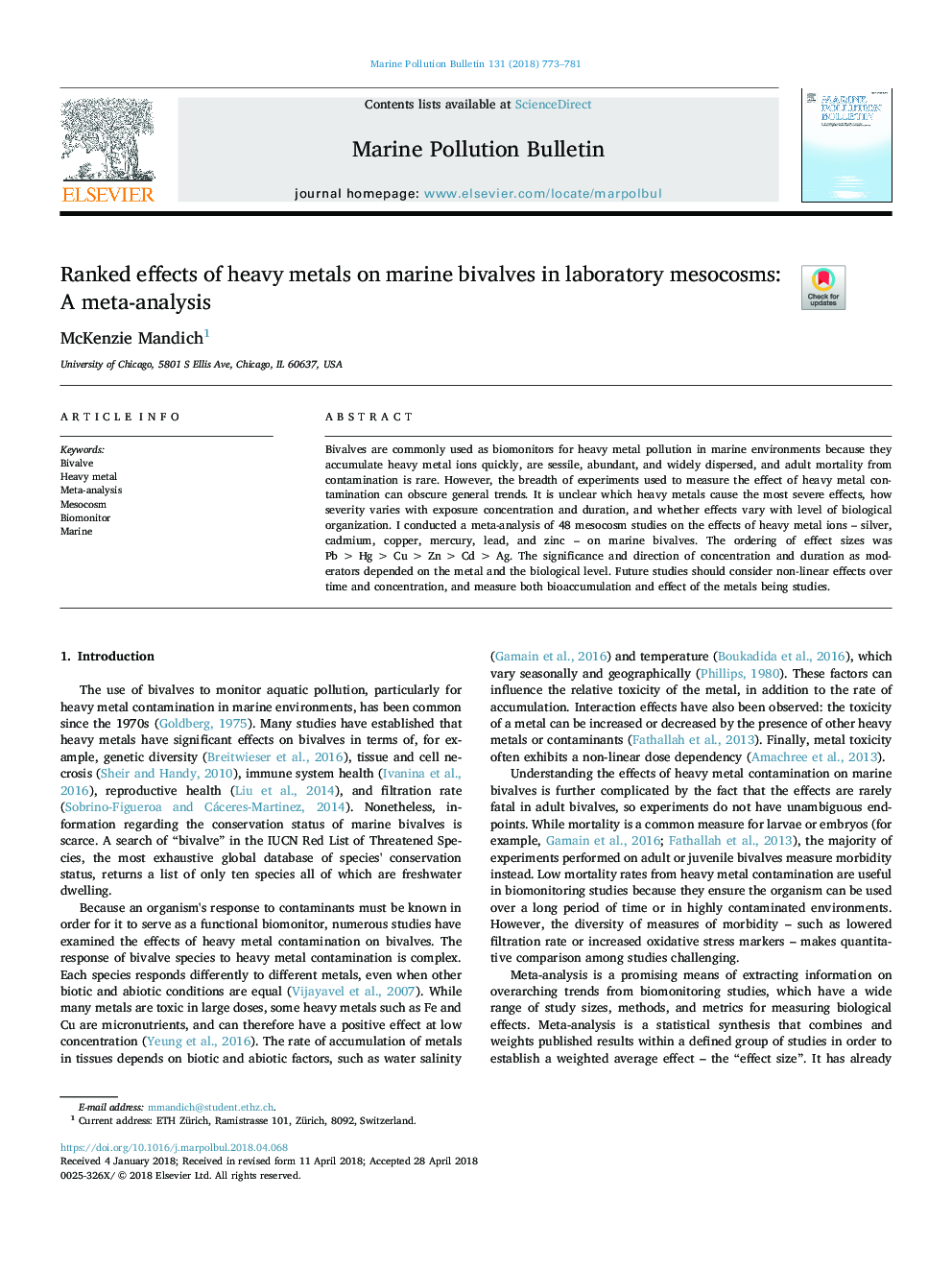| Article ID | Journal | Published Year | Pages | File Type |
|---|---|---|---|---|
| 8871099 | Marine Pollution Bulletin | 2018 | 9 Pages |
Abstract
Bivalves are commonly used as biomonitors for heavy metal pollution in marine environments because they accumulate heavy metal ions quickly, are sessile, abundant, and widely dispersed, and adult mortality from contamination is rare. However, the breadth of experiments used to measure the effect of heavy metal contamination can obscure general trends. It is unclear which heavy metals cause the most severe effects, how severity varies with exposure concentration and duration, and whether effects vary with level of biological organization. I conducted a meta-analysis of 48 mesocosm studies on the effects of heavy metal ions - silver, cadmium, copper, mercury, lead, and zinc - on marine bivalves. The ordering of effect sizes was Pbâ¯>â¯Hgâ¯>â¯Cuâ¯>â¯Znâ¯>â¯Cdâ¯>â¯Ag. The significance and direction of concentration and duration as moderators depended on the metal and the biological level. Future studies should consider non-linear effects over time and concentration, and measure both bioaccumulation and effect of the metals being studies.
Related Topics
Physical Sciences and Engineering
Earth and Planetary Sciences
Oceanography
Authors
McKenzie Mandich,
